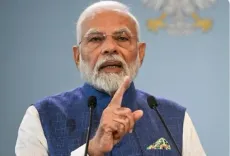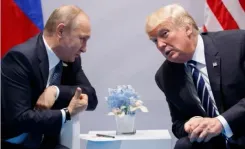Is Tamil Nadu Bearing a Greater Financial Load in Central Schemes?

Synopsis
A recent analysis reveals that Tamil Nadu is contributing a significantly higher percentage of funding to key welfare programs compared to the Union government. This trend raises questions about the distribution of financial responsibilities in central schemes and highlights the state's commitment to its citizens.
Key Takeaways
- Tamil Nadu significantly funds central schemes more than the Union government.
- The state has enhanced support for various vulnerable groups.
- Financial contributions highlight a commitment to social welfare.
- Disparities in funding raise important questions about equity.
- Understanding these dynamics is crucial for national policy development.
Chennai, June 14 (NationPress) Despite being characterized as Central schemes, the government of Tamil Nadu significantly surpasses the Union government's financial contributions in at least six key welfare and infrastructure initiatives, as outlined in official state documents.
The relevant schemes include three from the National Social Assistance Programme (NSAP): the Indira Gandhi National Old Age Pension Scheme (IGNOAPS), Indira Gandhi National Widow Pension Scheme (IGNWPS), and Indira Gandhi National Disability Pension Scheme (IGNDPS). Additionally, the Pradhan Mantri Awas Yojana (PMAY-Rural), Pradhan Mantri Matsya Sampada Yojana (PMMSY), and the Jal Jeevan Mission (JJM) are included.
The NSAP, initiated in 1995 as a fully Central-funded program, was preceded by Tamil Nadu’s own pension initiative, which commenced in January 1962.
Between 1974 and 1984, the State broadened its support to include individuals with disabilities, widows, agricultural workers, and abandoned women.
These categories were ultimately incorporated into the national scheme in 2007.
Under the IGNOAPS and IGNWPS, the Central government offers a modest monthly contribution of Rs 200 or Rs 300 for beneficiaries under 80 years, and Rs 500 for those aged 80 and older. The Tamil Nadu government supplements this amount, providing an extra Rs 1,000, Rs 900, or Rs 700, depending on the category, ensuring the total reaches Rs 1,200 per beneficiary.
In a similar manner, beneficiaries of IGNDPS receive Rs 1,500, with just Rs 300 or Rs 500 being funded by the Centre. The remainder is covered by the State government.
Tamil Nadu also independently aids individuals with disabilities through a distinct scheme, providing Rs 1,500 to each beneficiary. For PMAY-Rural, the nominal cost-sharing ratio is 60:40 (Centre: State) in rural areas.
However, Tamil Nadu's contribution is markedly greater. The overall unit cost for a house in the State is Rs 2,83,900, taking into account RCC roofing and components from MGNREGS and Swachh Bharat (Rural). Out of this, the Centre contributes Rs 1,11,100, while the State contributes Rs 1,72,800, resulting in an effective split of 39:61.
Under PMMSY, although the standard cost-sharing formula assigns 60 percent to the Centre and 40 percent to the State, implementation statistics reveal that Tamil Nadu shoulders 73 percent of the costs, with only 27 percent provided by the Centre.
The Jal Jeevan Mission, which stipulates a 50:50 cost-sharing model, also sees a higher contribution from the State in practice, with 55 percent coming from the State compared to the Centre’s 45 percent. These statistics illustrate a consistent trend whereby Tamil Nadu assumes a disproportionately higher financial burden in schemes that are intended and marketed as centrally sponsored.







